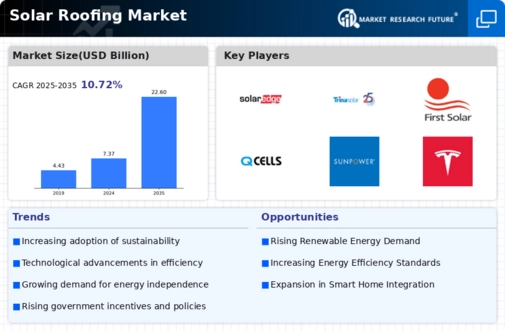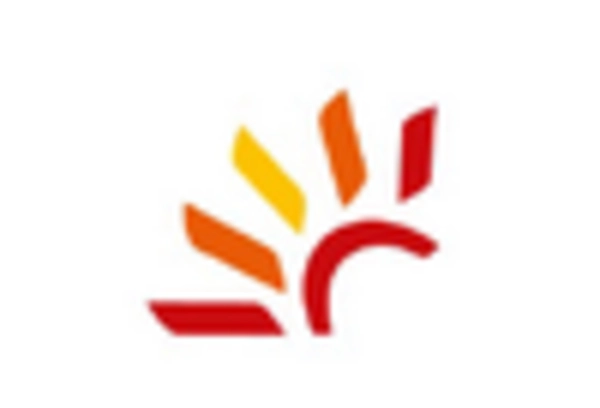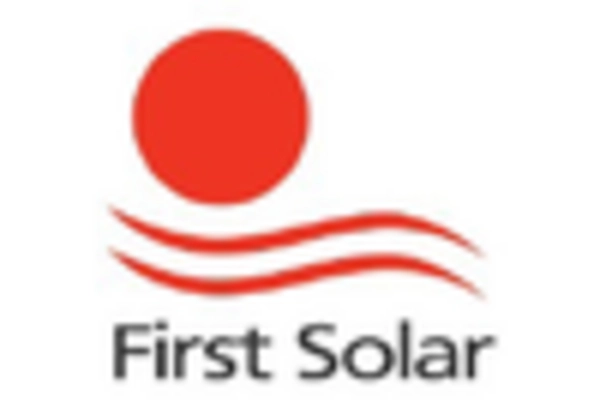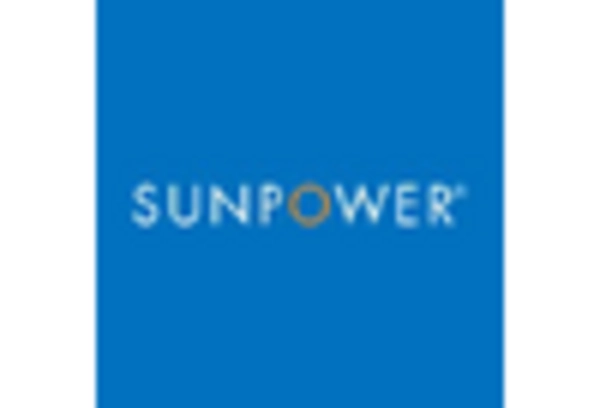The Solar Roofing Market is currently characterized by a dynamic competitive landscape, driven by increasing demand for renewable energy solutions and advancements in solar technology. Major players such as Tesla (US), SunPower (US), and LG Electronics (KR) are strategically positioning themselves through innovation and partnerships, thereby shaping the market's trajectory. Tesla (US) continues to leverage its brand strength and technological prowess, focusing on integrating solar roofing with its energy storage solutions. SunPower (US), on the other hand, emphasizes its commitment to sustainability and efficiency, aiming to enhance its market share through high-performance solar products. LG Electronics (KR) is also making strides by investing in research and development to improve solar panel efficiency, thus reinforcing its competitive edge in the global market.
In terms of business tactics, companies are increasingly localizing manufacturing to mitigate supply chain disruptions and optimize costs. This approach appears to be particularly relevant in the context of geopolitical tensions and fluctuating trade policies. The Solar Roofing Market is moderately fragmented, with a mix of established players and emerging startups. The collective influence of key players is significant, as they not only drive technological advancements but also set industry standards that smaller companies often follow.
In August 2025, Tesla (US) announced the expansion of its solar roofing production facility in Buffalo, New York, aiming to double its output capacity. This strategic move is likely to enhance Tesla's ability to meet growing consumer demand while reducing lead times for installations. The expansion aligns with Tesla's broader strategy of integrating solar solutions with its electric vehicle offerings, potentially creating a seamless energy ecosystem for consumers.
In September 2025, SunPower (US) launched a new line of solar panels designed specifically for residential applications, featuring enhanced efficiency and aesthetic appeal. This product launch is indicative of SunPower's focus on catering to the residential market, which is experiencing a surge in interest as homeowners seek sustainable energy solutions. By prioritizing design and performance, SunPower aims to differentiate itself in a competitive landscape where consumer preferences are evolving.
In July 2025, LG Electronics (KR) entered into a strategic partnership with a leading homebuilder to integrate solar roofing solutions into new residential developments. This collaboration not only expands LG's market reach but also positions the company as a key player in the growing trend of sustainable construction. By aligning with homebuilders, LG is likely to capture a significant share of the market as consumers increasingly prioritize energy-efficient homes.
As of October 2025, the Solar Roofing Market is witnessing trends such as digitalization, sustainability, and the integration of artificial intelligence in product development and customer engagement. Strategic alliances are becoming increasingly important, as companies recognize the value of collaboration in enhancing their technological capabilities and market presence. Looking ahead, competitive differentiation is expected to evolve, with a shift from price-based competition to a focus on innovation, advanced technology, and supply chain reliability. This transition may redefine how companies position themselves in the market, emphasizing the importance of sustainable practices and cutting-edge solutions.

















Leave a Comment